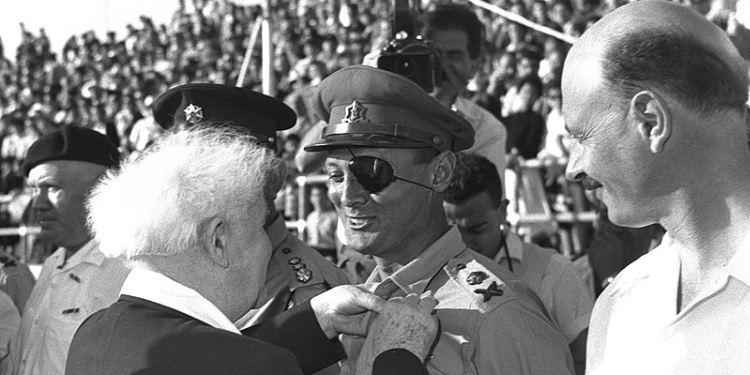Moshe Dayan’s Eye Patch
Stand for Israel | May 22, 2023

Last week, Israel celebrated Jerusalem Day, the celebration of the reunification of God’s Holy City after Israel’s miraculous victory during the Six-Day War of 1967. Among the IDF leaders photographed in the newly reunified Old City was Moshe Dayan. While famous for overseeing Jerusalem’s reunification, Dayan is just as iconic for the eye patch he wore. So, as this week’s Israeli You Should Know, we’ll look at how this hero of the IDF came to wear the black eye patch for which he is remembered.
Born on Kibbutz Dagania Alef by the Sea of Galilee, Moshe Dayan was destined for military greatness from birth. He was named for Moshe Barsky, an early Zionist hero and the first resident of the kibbutz to be killed in a terrorist attack, while trying to deliver medicine to Dayan’s father. Raised on Nahalal, the first moshav (an Israeli agricultural community), Dayan was a true child of the Holy Land.
At age 14, Moshe joined the Haganah, the precursor to the IDF. When WWII broke out, Dayan served under the Allied forces during the campaign in the Middle East.
On the eve of the Syria-Lebanon Campaign, Dayan’s unit crossed the border into Nazi-supporting Vichy French Lebanon. They secured two bridges and then secured an enemy police station.
While atop the station’s roof, scanning the horizon for enemy forces through a pair of binoculars, Dayan was struck by an Vichy sniper bullet from hundreds of yards away. The round shattered the binoculars, sending metal and glass shrapnel into his left eye. No rescue evacuation could be attempted for several hours, and he would have died if not for his comrades’ help.
Once evacuated, Dayan lost his eye, and doctors couldn’t reverse the severe muscle damage, either, meaning he couldn’t be fitted with a glass eye. Thus, he began to wear the black eye patch he would become known for.
But in the beginning, Moshe Dayan didn’t embrace this new change to his lifestyle. Letters found after his death show that he begged the military brass to let him return to combat, which he wasn’t allowed to do. He also “reflected with considerable misgivings on my future as a cripple without a skill, trade, or profession to provide for my family.”
Besides losing all that he ever dreamed of being—a watchman atop the Holy Land’s walls—Dayan also hated how his disability appeared. The depressed soldier swore he was “ready to make any effort and stand any suffering, if only I could get rid of my black eyepatch.” He also lamented, “The attention it drew was intolerable to me. I preferred to shut myself up at home, doing anything, rather than encounter the reactions of people wherever I went.”
But after WWII, the nation of Israel found itself fighting for its independence and the very existence of the Jewish people. And so, as a leader of men and a military genius, Moshe Dayan began his long IDF career during the 1948 War of Independence, a career that we will surely discuss in future pieces.
Throughout Israel’s many wars, Dayan was known for his skill on the battlefield. And around the world, Israeli grit came to be symbolized by the black eye patch that Moshe Dayan wore, a symbol of his own determination.
